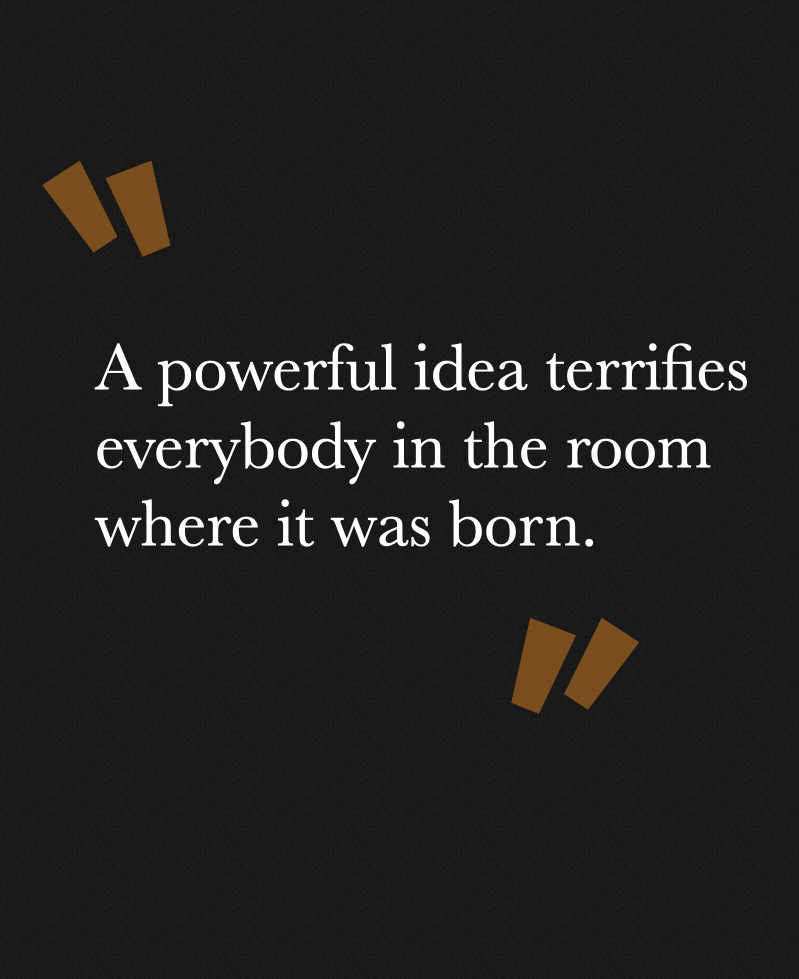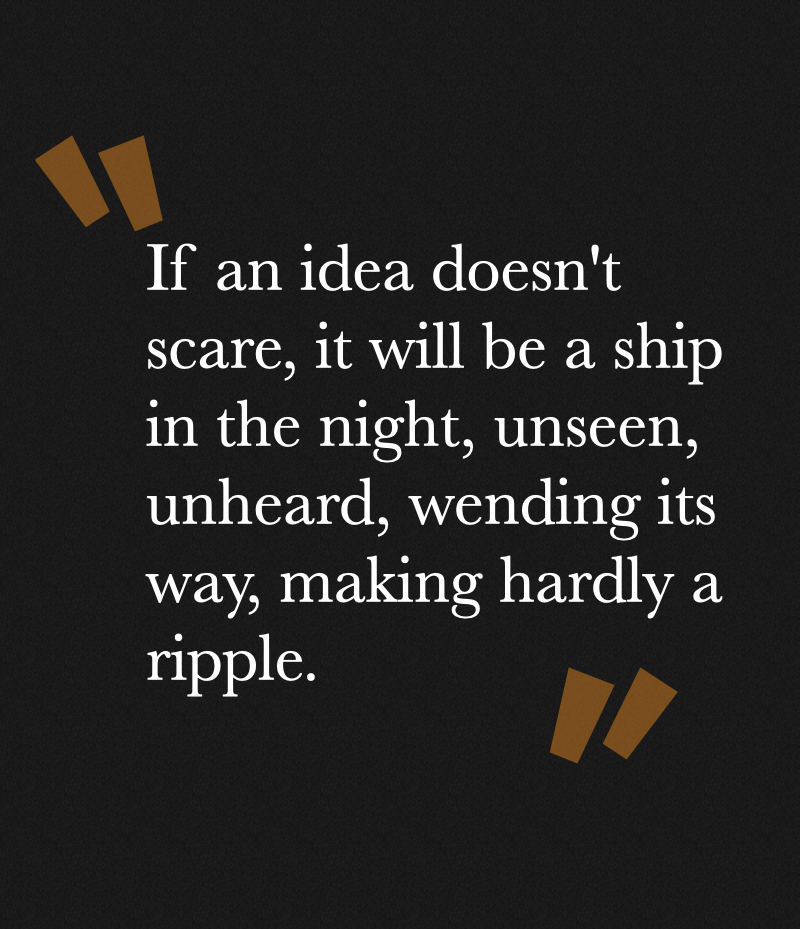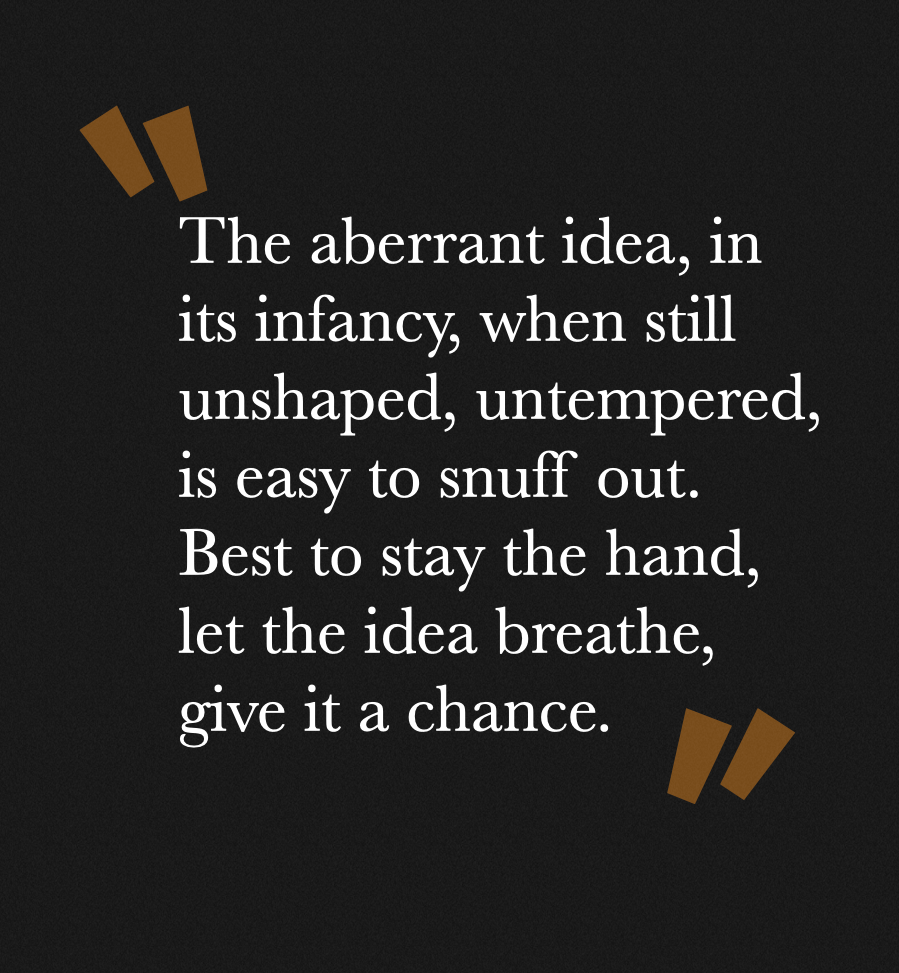
There are good-looking ads that can win awards but cannot tickle products off the supermarket shelves on which they are moored.
They may be pretty and produced expensively, but they are not the sort that shake trees and change minds, affect and infect people. But once in a very blue moon, an ad will make its product fly out of stores, create out-of-stock headaches for its manufacturers.
The powerful idea is rare because few survive. The problem is not creativity; the problem is more one of process.
An idea with potential must have a defender.
It must have a champion, someone who will say, “wait, wait, let’s give this a chance”. Without one, it will die, most assuredly. No matter how wild or impractical, no matter how small its chances of being approved, that idea deserves a discussion, or an argument. When something crazy comes up in our ideation sessions, an oft-repeated line is mamaya, gaganda iyan. The silliest of ideas, the most unworkable, could be that earthshaking idea later, made viable after hammering into shape and tempering.

Should it survive the room in which it was born, there are other rooms to contend with. In large companies, they subject the idea to panel reviews, where people of other teams are invited to weigh in, with management in attendance. Quick and dirty research, or an FGD, will be suggested.
The larger, the more aberrant the idea, the bigger the target; criticism will be harsher, opposition will be louder.
When an idea is subjected to reviews, what survives is an ad shorn of stark and strong features. "Do they have to be poor?" "Can we make the house not too realistic?" There will be attempts to shave or smoothen what juts out, to make it be more regular, more acceptable, to remove what is abrupt or surprising or ugly.
There are people who prefer doing only what is pretty and fashionable. There are those who start brainstorming sessions thinking of appealing to the young, which means they are searching for a tone of voice instead of trying to come up with a big idea. Many look for what is 'in good taste' today. Now 'good taste' is the norm established by many, applauded through years, and rendered expected. If you create something of good taste, you might look like the rest, at best, you might look world-class. But to beat the best of the world though, you must be aberrant.
The ability to trigger sales trumps appeal.
Aberrant Advertising
The people in the agencies I have led were indoctrinated and soused and marinated in the concept of ‘Aberrant Advertising’. This is creative work that is ‘in-your-face’; it is work that exploits every single second it is allowed use of. But more importantly, it must be atypical, digressive, unexpected.
An aberrant idea terrifies everybody in the room where it is born. And that is a great check for the caliber of an idea: if an idea doesn’t scare the creators, it will be like one of those good-looking but impotent ads. It will be a ship in the night, unseen, unheard, moving along, wending its way, making hardly a ripple.

The 'Eh, kung' mechanism elicits the wild.
Our mechanism for eliciting aberrant ideas is to ask 'Eh, kung?' (‘what if?’), to be followed by a wild thought, which we would then temper later.
The story for Bonamil is sturdiness, or Tibay sa Buhay, a campaign that runs to this day. 'Eh, kung' we throw infants into the water? Show them swimming naturally and gracefully, as if they were meant to be under water? 'Eh, kung' they are naked? Looking vulnerable? During the infancy of this great idea, reviews engendered howls and gasps. There were concerns about safety ("we can't do that – people might follow"), and credibility ("nobody does that", "who has ever seen an infant swimming?"). There were those who asked that they be given flotation devices (which would have killed the idea immediately), and that there should be adults swimming with them. And then there was the demand that they be clothed "because we can't show genitals".
The idea survived with some concessions. Firstly, you'll see an adult hand, here and there, to tell the viewer that the children were not in the pool unsupervised; and, secondly, computer graphics made sure that these naked swimmers had no genitals, as ordered.
Ramon del Rosario, Jr. asked to see speculative presentations for AsianBank because he wanted to change the then prevailing image of the firm, which was that of a small savings bank.
'Eh, kung' we tell the potential bank customer to keep his regular bank? He is going to need the banking network which AsianBank still does not have. What if we tell the viewer that should his needs become more complicated, he should consider AsianBank as “his other bank?”
What the campaign did, in effect, was pole-vault the new bank to being the “second bank” in the customer’s mind.
The agency is only as creative as the client will allow it. The bank client who allows himself to be positioned as 'the other bank' is one amazing client.
Aberrant advertising.
We did not want to sell RiteMED, a brand of generic medicines, as cheaper medicines, we did not want to state the obvious. 'Eh, kung' we get angry, what if we scold the viewer for buying expensive? Tell her that “it’s wrong to buy expensive medicines if there’s RiteMED? Tell her 'Bawal ang Mahal?'
Aberrant advertising.
The room most neglected in Philippine homes is the comfort room. If broken, the fixtures will remain broken. Inertia at rest is an obstacle: getting around to renovating and replacing old facilities is the hard part.
Eh, kung we tell the homeowner that the bathroom is her “true living room”? That a comfortable bathroom with HCG facilities allows one to linger, spend more time in, even do some thinking?
The tagline or creative expression is I can live here, and it is loved enough by HCG that they use it elsewhere.

How to tell if your big idea is big enough?
If it scares you, if it scares agency and client. Giving in to fear, of course, is hindrance to large, landmark success.
The aberrant idea, in its infancy, when still unshaped, untempered, is easy to snuff out. Think of it as an eaglet, vulnerable to other birds of prey, needing protection and tending. Best to stay the hand, let the idea breathe, give it a chance, and do not try for consensus.
In advertising, as in many disciplines that rely on judgement, one person has to own the problem, one person has to say, “yes, this is scary, but we’re going with this big idea, we're going to present this, bet on it”.

Vincent R. Pozon
After a year of college, Koyang entered advertising, and there he stayed for more than half a century, in various agencies, multinational and local. He is known for aberrant strategic successes (e.g., Clusivol’s ‘Bawal Magkasakit’, Promil’s ‘The Gifted Child’, RiteMED’s ‘May RiteMED ba nito?', VP Binay's 'Ganito Kami sa Makati', JV Ejercito's 'The Good One'). He is chairman of Estima, an ad agency dedicated to helping local industrialists, causes and candidates. He is co-founder and counselor for advertising, public relations, and crisis management of Caucus, Inc., a multi-discipline consultancy firm. He can be reached through vpozon@me.com.
If you liked what you just read and want more of Our Brew, subscribe to get notified. Just enter your email below.


Related Posts
What We Get Wrong About This Strange Thing We Call Advertising
Jul 02, 2025
The Party as a Person: The Story of ‘Pag Mahal Mo, Akbayan Mo’
May 16, 2025
Frequently-Asked Questions About Advertising – Part VII
Apr 11, 2025